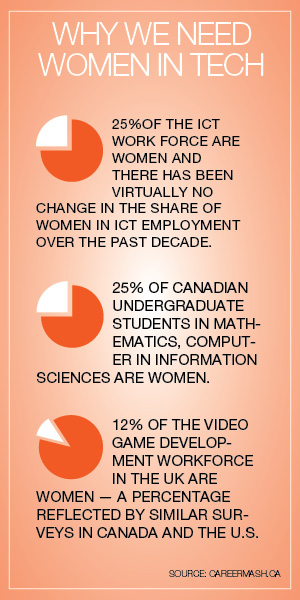Why ICT Should Be Your Second Career
Career Opportunities With a skills gap influencing the ICT industry, its broad-ranging jobs are an exciting opportunity, especially for women, to start a new career.
Perspective
As a former English major and publishing professional, no one was more surprised than I was to find myself embarking on a second career in Information Communications Technology (ICT). As it turns out, my first career as an editor for a major educational publishing firm was the perfect place to witness the power of the internet — its potential as an educational tool, destined to disrupt, and in some ways enhance how we communicate, forge identity, relationships, and create communities online.
An Industry Broadens
The Information Technology Communications sector encompasses much more than information technology — it includes devices, applications, systems and networks. As the industry burgeoned in the late 90s and beyond, I witnessed first-hand how exciting the sector could be — how many opportunities there were for both men and particularly women; specifically, in emerging sectors like digital media/content development, social media, health informatics, mobile/wireless applications, innovation management, as well as entrepreneurship.
Where Are All The Women?
 My own acceptance to a new Masters in Technology Education programme at Harvard University in the mid-90s enabled me to also study at the Massachusetts Institute of Technology. As I began to study the impact of the internet, the other question that was at the forefront for me was, “where are all the women?”
My own acceptance to a new Masters in Technology Education programme at Harvard University in the mid-90s enabled me to also study at the Massachusetts Institute of Technology. As I began to study the impact of the internet, the other question that was at the forefront for me was, “where are all the women?”
It became apparent that few women were designing, developing, or even using technology anywhere close to the rate of men. Graduates in university programs, such as engineering and computer science, were pervasively low and I wanted to understand why.
As we now know, the issues are systemic and include challenges such as negative stereotypes attached to the tech industry, lack of female role models and mentors, and the tendency for girls to avoid taking high school — math thereby hindering their access to traditional tech programs and careers.
Technology with Curves
I looked for solutions to draw women into the industry by working with various educational and networking organizations for women. I also co-wrote a book that interviewed and profiled several cutting-edge female leaders in ICT from around the world, Technology with Curves: Women Reshaping the Digital Landscape. It profiled international female leaders who held exciting jobs in ICT or who had founded their own successful companies. What we found was that a high proportion of those women didn’t follow a traditional career path into ICT — for example, computer scientists or engineers. Rather, they entered the industry as I did — as a second career with no conventional technology training.
Tapping into the Potential of Women
Today, many of those systemic barriers still exist and women are still fewer than one-quarter of workers in ICT occupations. I continue to look for avenues to work with industry, education, and government leaders to find solutions that count women in and help raise awareness that jobs in ICT do not necessarily require STEM education and training. Developing programs and curricula that cultivate hybrid business and technology skills, digital up-skilling as well as entrepreneurial and innovative mindsets is also critical. Given the current severe ICT skills shortage, I believe that tapping into the untapped potential of women is a viable solution and that increased diversity in the workplace will also give companies a desirable competitive edge domestically and globally.
